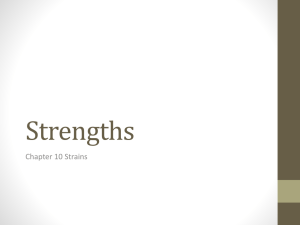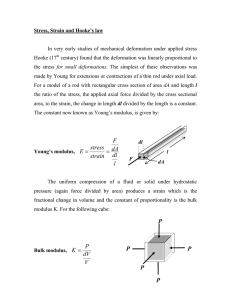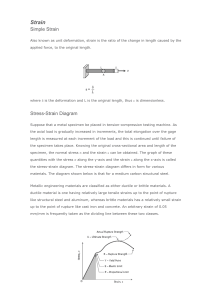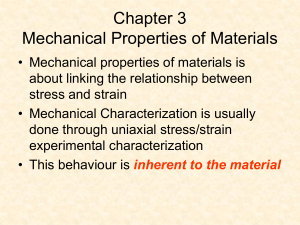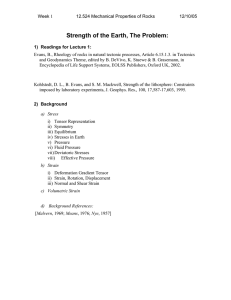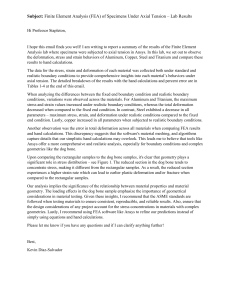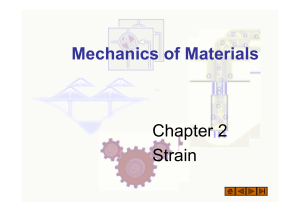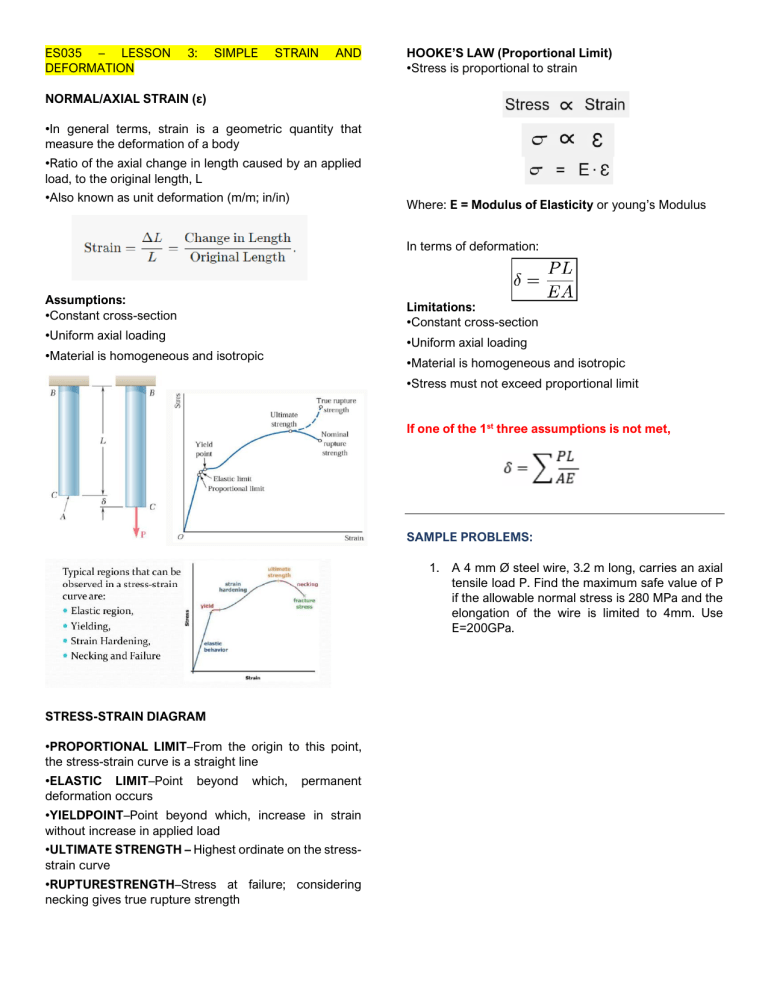
ES035 – LESSON DEFORMATION 3: SIMPLE STRAIN AND HOOKE’S LAW (Proportional Limit) •Stress is proportional to strain NORMAL/AXIAL STRAIN (ε) •In general terms, strain is a geometric quantity that measure the deformation of a body •Ratio of the axial change in length caused by an applied load, to the original length, L •Also known as unit deformation (m/m; in/in) Where: E = Modulus of Elasticity or young’s Modulus In terms of deformation: Assumptions: •Constant cross-section Limitations: •Constant cross-section •Uniform axial loading •Uniform axial loading •Material is homogeneous and isotropic •Material is homogeneous and isotropic •Stress must not exceed proportional limit If one of the 1st three assumptions is not met, SAMPLE PROBLEMS: 1. A 4 mm Ø steel wire, 3.2 m long, carries an axial tensile load P. Find the maximum safe value of P if the allowable normal stress is 280 MPa and the elongation of the wire is limited to 4mm. Use E=200GPa. STRESS-STRAIN DIAGRAM •PROPORTIONAL LIMIT–From the origin to this point, the stress-strain curve is a straight line •ELASTIC LIMIT–Point deformation occurs beyond which, permanent •YIELDPOINT–Point beyond which, increase in strain without increase in applied load •ULTIMATE STRENGTH – Highest ordinate on the stressstrain curve •RUPTURESTRENGTH–Stress at failure; considering necking gives true rupture strength 2. The steel propeller shaft ABCD carries the axial loads shown in figure. Determine the change in the length of the shaft caused by these loads. Use E = 29 x 106 psi for steel. 3. The rigid bar ABC is supported by a pin at A and a steel rod at B. Determine the largest vertical load P that can be applied at C is the stress in the steel rod is limited to 35 ksi and the vertical movement of end C must not exceed 0.12 in. Neglect the weights of the members.

